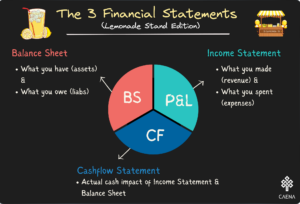society — between vaccine promoters and anti-vaxxers; “maskers” and “anti-
maskers” and so on. The rifts extend beyond health-related ideologies. There’s also
that huge line in the startup world separating the flush-with-cash venture capital
backed founders and the thrifty bootstrapping entrepreneurs.
Across the world, the pandemic has led to a sharp increase in the formation of new
businesses. There has also been a flurry of venture capital activity funding to
startups over the same period. According to 2020 half year report from Crunchbase,
the US$288 billion invested by VCs globally represented a 95% increase over the
same period in 2020 (and roughly the same increase over 1H2019, pre-pandemic).
Despite the headlines, majority of early stage startups especially under-represented
founders still struggle to get funded. Most of the increased funding has been repeat
fundings or later stage rounds. That is, VCs are more willing to pour more cash into
businesses and founders they know well rather than back the unknown.
For those not lucky enough to get their power point decks funded on day zero, all
hope is not lost. The good news is that it is perhaps much easier to start a business
than at any other time in history. The biggest impact is possibly due to Amazon Web
Services (AWS) and other cloud services through which it is possible to build out
websites and the core of most tech companies instantly and at relatively little cost
compared to twenty years ago.
3 principles to adopt for founders working on a shoestring budget
There are three key principles to master when running a small business on a
shoestring:
1) Keep It Small and Simple
Starting a company does not have to be a complex endeavour especially when you
are bootstrapping. Starting big means added costs that really are not necessary at
the initial stages in most businesses. Getting too big, too fast can lead to scaling and
multiplying problems which makes those problems harder to resolve.
The “Lean Startup” approach popularised by Eric Ries prioritises experimentation
and short-term planning over perfection and elaborate planning. This approach
encourages startups to think in terms of achievable micro milestones and plan from
there.
Entrepreneurs are by definition big, audacious dreamers. The challenge is knowing
how to combine dreaming big with starting small. The trick is to break goals no
matter how big they are into very small and achievable milestones. For instance, the
first major milestone for most startups is the Minimum Viable Product (MVP).
According to Michael Siebel of Y Combinator, the primary goal for a pre-launch startup is to launch quickly. The MVP may involve software but could also be a simple landing page and a spreadsheet.
2) Make Use of What’s Free and the 3 Fs
Entrepreneurship can be a lonely journey, but it does not have to be so. There is one
group which is arguably underrated when starting out on the entrepreneurial journey
– friends, family & foes.
As an early-stage entrepreneur, there is no point paying for services which you can
get for free. Ask your friends and family for help carrying out initial research,
validating your idea and for help with some of the heavy lifting as you build out.
One often overlooked source of support for entrepreneurs is the government. In the
UK, government support for entrepreneurship takes several forms. These include the
EIS / SEIS scheme to encourage investment in private companies, the Kickstart
scheme which supports businesses with talent for up to six months and Innovate UK,
which funds development of products and services which involve research and
development.
3) Be Flexible and Open to Change
It is accepted as business gospel that entrepreneurs cannot succeed without plans
or business plans. What is not emphasised enough is that most plans are based on
limited information and are at best up in the air. Jason Fried is one of the loudest
voices for rethinking the common approach to predicting the future. In his book
Rework, he describes business plans as guesses and suggests entrepreneurs treat
them as such.
There are few businesses that eventually succeed with the original idea the founders
started with. Pivoting does not necessarily mean you have to abandon the product or
service you are providing, but it may mean setting yourself up to offer it in a different
way.
How We Support These 3 Principles
At Caena, we have adopted these three principles as we build out tools to help
founders grow their businesses. With our platform, founders can build out multiple
financial models for free to test various sets of assumptions which aids flexibility. In
addition, our projections and chart outputs are super simple and go straight to the
primary purpose of helping founders tell their story.
For early-stage founders who need projections and charts for pitch decks, business
plans, SEIS/EIS applications and grant applications, we’ve got you covered.






